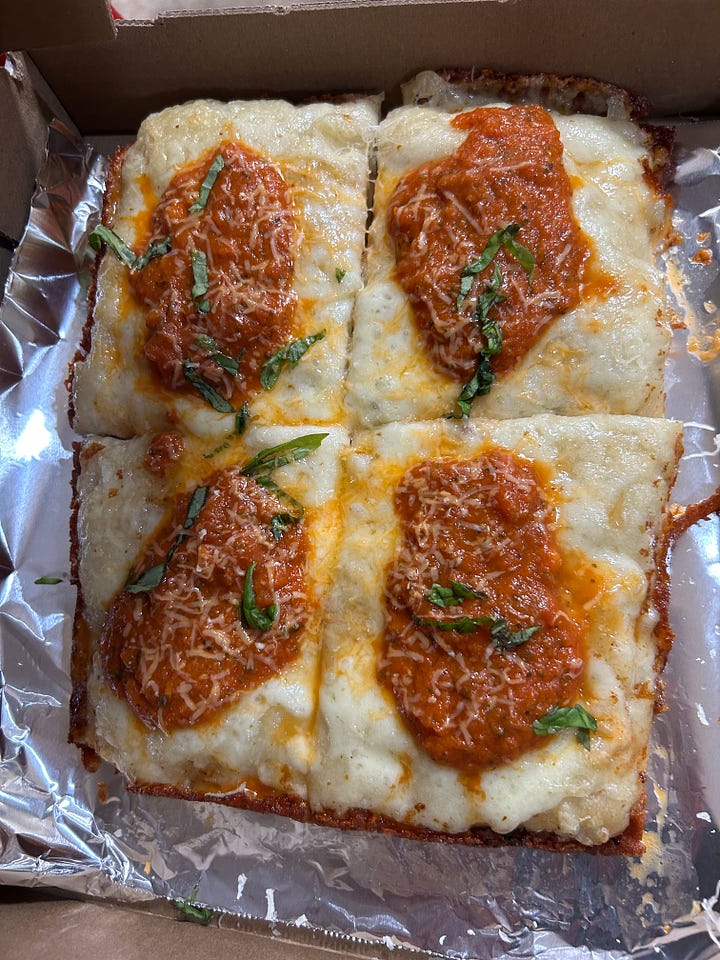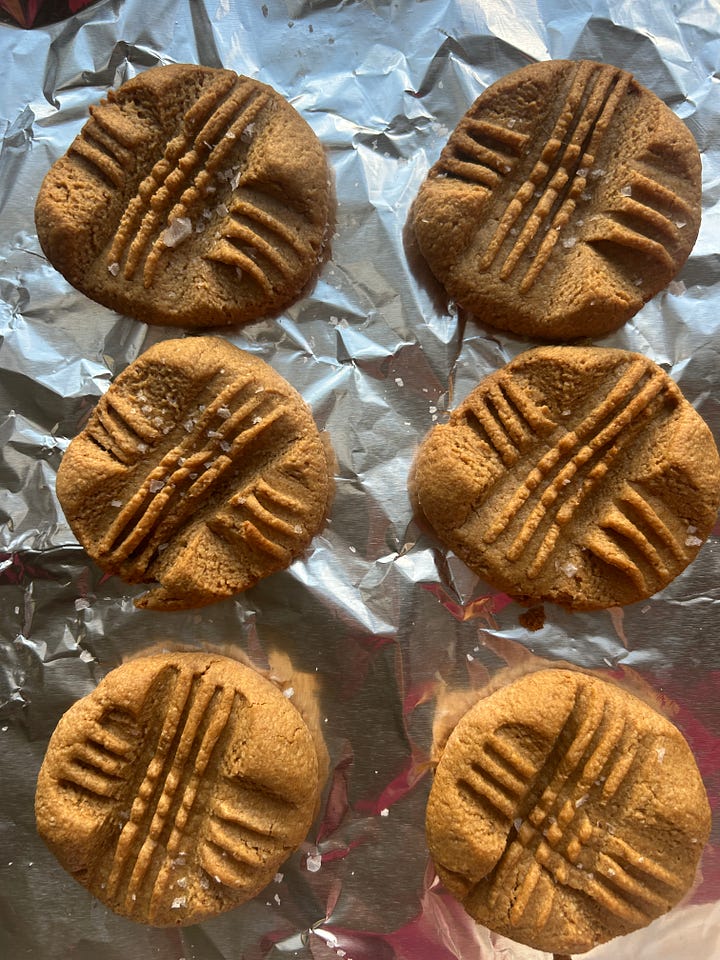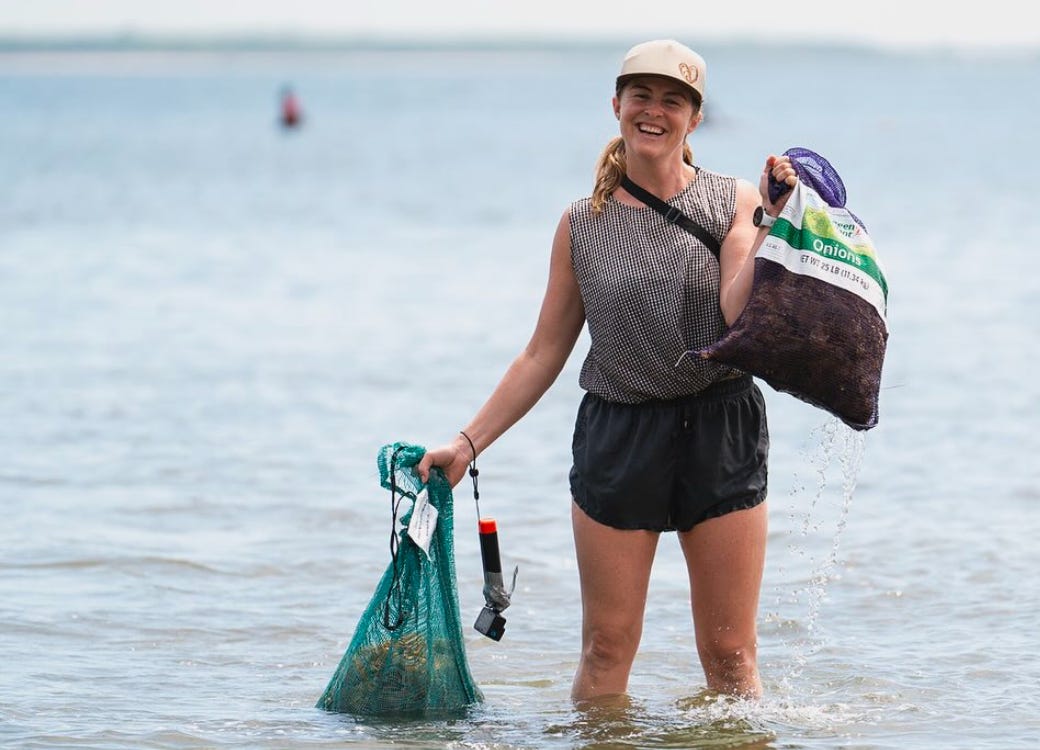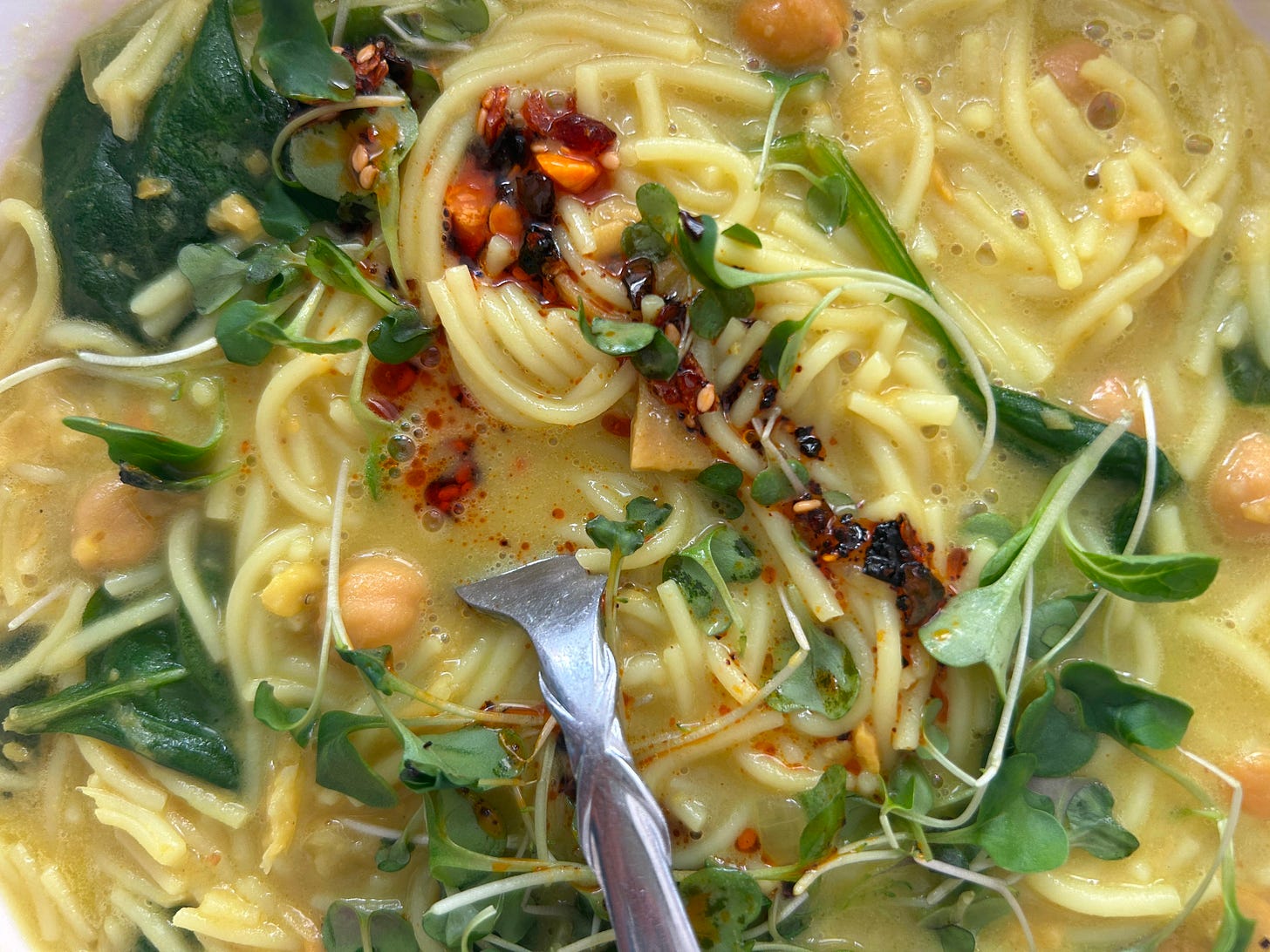If you like my newsletter, please share it! In today’s world of mindless scrolling, I appreciate you taking a moment to read this.
Meet Alexandra Talty, an ocean journalist, oyster farmer, long-distance swimmer, activist, and overall badass! I came across her work on Civil Eats and asked her to help us understand the importance of ocean restoration and kelp's role in underwater eco-systems.
You are an environmental journalist - how cool is that? What led you down this path, and what drives you to keep telling stories?
My route to environmental journalism was circuitous. I started my journalism career as a travel reporter for Forbes. I was based in Lebanon at the time and loved the gig, but I always found myself drawn to more environmental stories. I would freelance for other media outlets, covering topics like the scientists who saved the original wheat seeds from the Syrian Civil War or how wildfires led to Lebanon’s 2019 revolution.
When the pandemic hit in March 2020, travel immediately felt like a weird topic to cover. At the time, I had just moved back to my hometown of Southampton, New York. I was surrounded by family farms and the ocean, and I wanted to focus on hyper-local stories that could have big impact. I shifted gears entirely and started covering topics like sewage and water pollution or farmers trying to legalize kelp aquaculture in New York State.
I love the impact that environmental stories can have on local communities. In the media, we talk a lot about rural/urban divide. I love working with people who don’t read the news or don’t see themselves portrayed in the media. It can be tough sometimes convincing people to speak with you, but I think those stories have the biggest impact and can help show how important our environment is.
Your focus has been on ocean restoration and aquaculture. Can you explain the state of today's ocean from your perspective and why we should be concerned?
This is a good news-bad news answer. The ocean is in a bad state right now from climate change. The ocean’s natural cycles are being wrecked from marine heatwaves to absorbing excess carbon. Stakeholders, from commercial fishers to scientists to Indigenous groups, are noticing the stark differences from ten years ago. We should be doing everything we can to curb emissions, curb plastics, and curb overfishing.
At the same time, the ocean is incredibly resilient. It covers over 70% of the globe and is responsible for crucial functions like producing oxygen or sucking up excess heat. If we bolster coastlines with native species (basically allowing nature to nature) and commit to setting up more Marine Protected Areas or MPAs, we have a much better shot at fighting the biggest effects of climate change.
After reading your work, I understand that kelp forests cover one-third of coastlines. What does this mean, and what purpose do they serve?
Kelp forests are considered a keystone species in the ocean, meaning that a lot of marine life - from blue whales to abalone - depend on this ecosystem for habitat or food. They are often found in colder waters and cover ⅓ of the world’s coastlines.
In much of your work, you focus on ways in which we can restore these ecosystems. What are some of the ways groups are rebuilding kelp forests?
In the US, much of the focus is on supporting scientists researching kelp forest regeneration. Kelp forest regeneration is quite a new topic and mainly on the West Coast. However, as the East Coast experiences more kelp forest losses, I think it will become bigger.
Korea is the leader in kelp forest regeneration globally. Their national fisheries agency committed to “greening” 75% of their coastlines, which include kelp re-forestation. Many projects are funded by the government, and then partner with local communities to get support to re-forest. I think that is a great top-down approach and a good way to get people thinking about these unseen ocean ecosystems that are so crucial for marine life.

I’ve seen some of the work you’ve published about the Shinnenock kelp farmers- from what you’ve learned, how do Indigenous communities or the Shinnecock think about the oceans and ocean management?
The Shinnecock consider resource management in terms of seven generations. For the kelp farmers, they want to be able to hand down their tribal territories surrounded by abundant shellfish, fish and seaweed through to the next seven generations.
I was lucky to grow up next to the Shinnecock Tribal Territory and see this idea of seven-generation stewardship in practice. If everyone working on the ocean took that approach, our ocean would be in a much better place than it is today.
What is one thing you wish more people understood about the ocean?
It is the largest ecosystem in the world! And where life on earth originated from. I think humans can be very earth-bound, and that really affects how we approach conservation, pollution, etc. For example, in Northern California, 9X% of their kelp forests were wiped out in two decades. Could you imagine the outcry if that happened to the forests there? Because these kelp forests are underwater and not visible from shore, they weren’t noticed in the same way.
We need to think of the ocean as the source of life.
To keep up with Alexandra and her work, follow her here.
Gems of the Week ✨
My event is live! I’ve been working with Farm to People for the past couple of months planning this series, Know Your Food. Our first event with Chloe Sorvino sold out, but we have tickets available for 1/28 to learn about Wild vs Farmed seafood and will be releasing tickets soon for conversations with Alicia Kennedy, Ethan Frisch of Burlap and Barrel, and Marion Nestle. If you live in NY/NJ and haven’t tried a Farm to People delivery, this is your sign! They gave me a new code (DANIELLE25) for $25 off.
- shared her lentil recipe! If you don’t know Clare, she is a four-times James Beard nominated chef and a writer, the owner of Stissing House and co-owner of King, and has become a bit of a home cook hero like in this piece.
Red Dye is Banned - This is good news. This dye is made from petroleum and was already banned from cosmetics in 1990 for being carcinogenic. I predict this is just the tip of the iceberg, exposing toxic chemicals in our food.
A new way to see what was for dinner 3 million years ago - sorry caveman diets, early humans were eating plants.
Seany’s Pizza - a local business in Rockaway, which is closed for the season, is making pre-order pizza for pickup. It felt nice to support a local business and exciting to eat something made with care.
Peanut butter cookies - these are the quickest cookies you can ever make. 5 ingredients and are satisfying.


Chickpea Turmeric Noodle Soup ✨
This recipe covered almost 5 meals in our house last week.
I made
Chickpea Turmeric Stew and added in rice noodles while cooking and topped with microgreens and chile crisp.Please note: This is the same recipe that led to an important conversation about ethnic erasure in cooking and the colonization of spices.
I find her recipes easy to follow and usually have a helpful cooking tip, so hopefully, now she can better credit the origins of her recipes and call it a curry.






